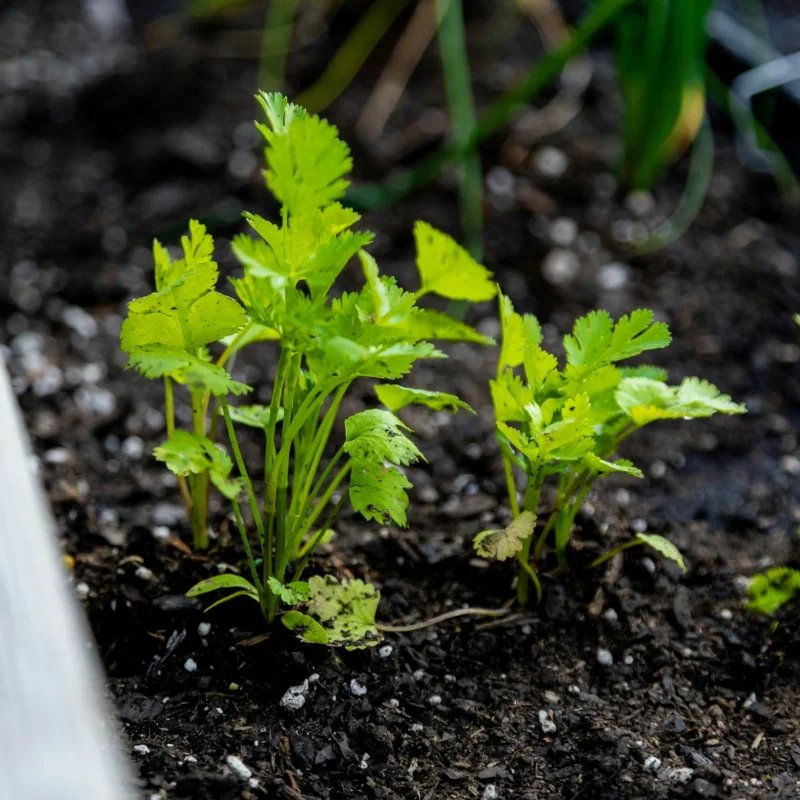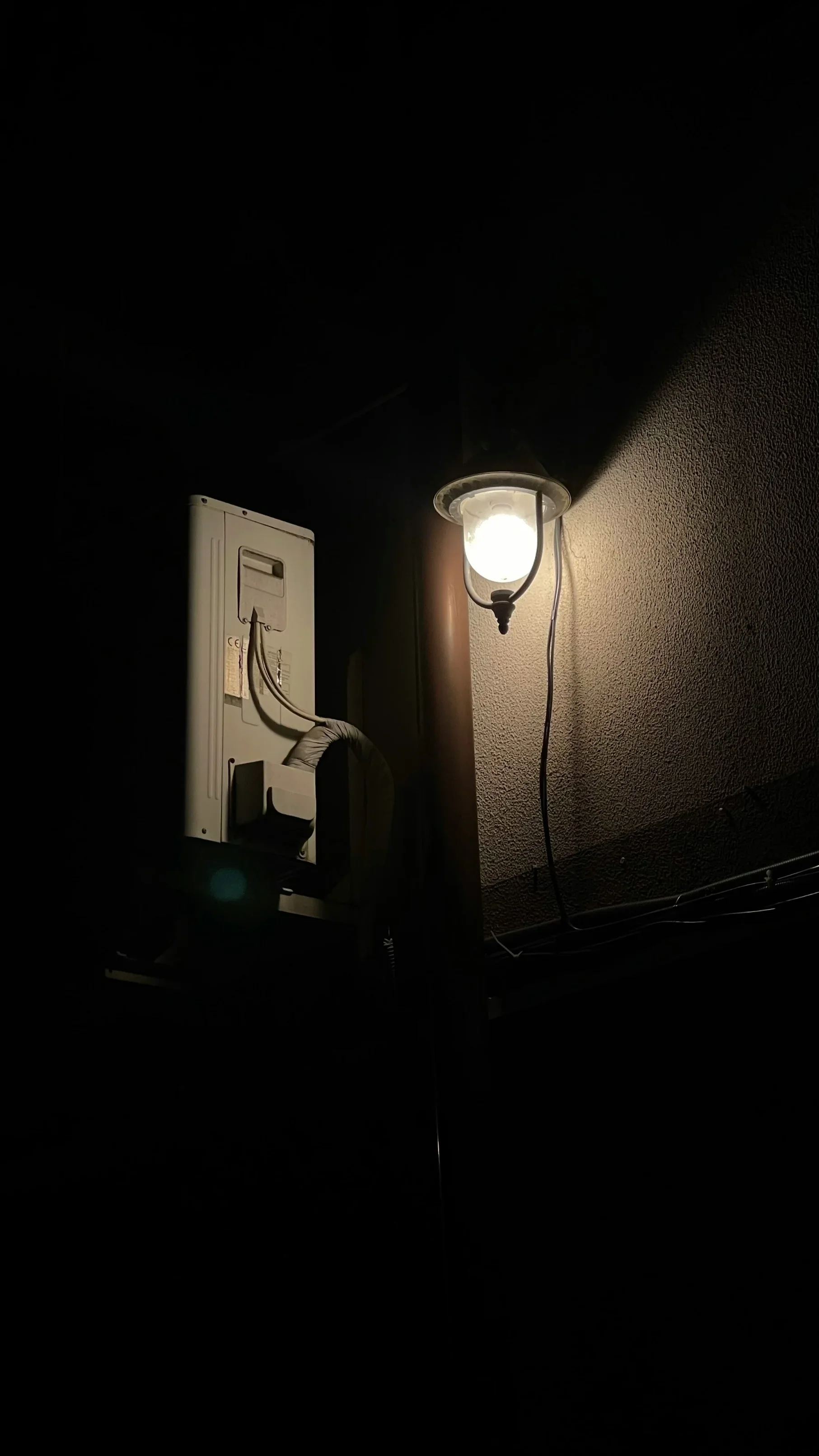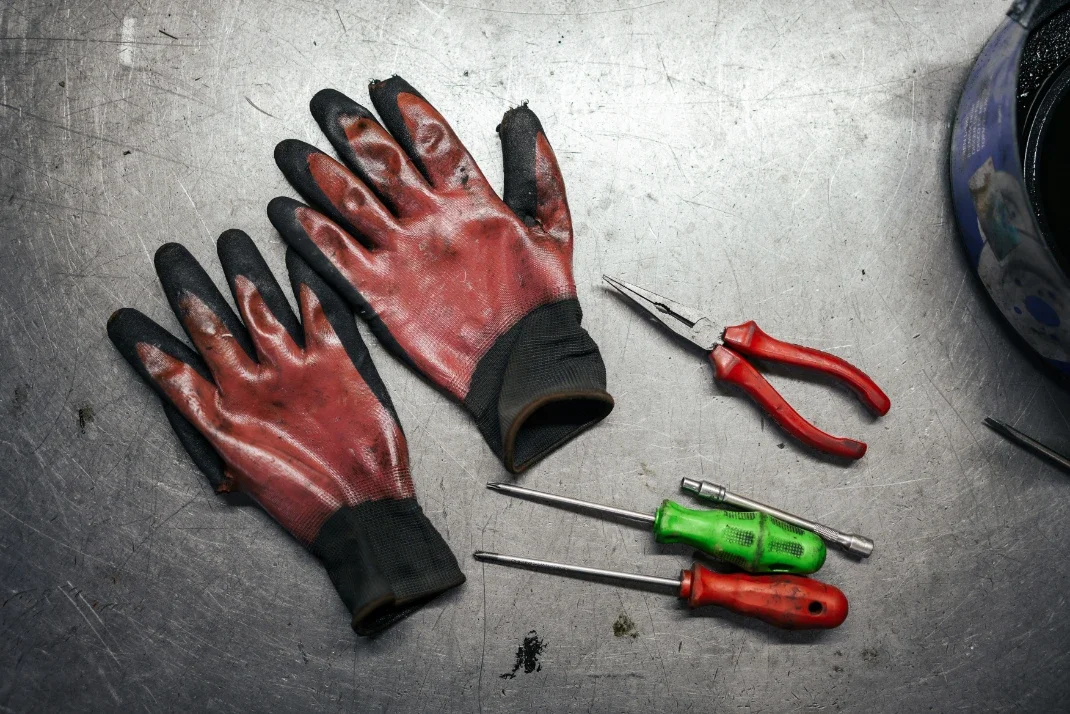How to Plant Cilantro from Seeds Step by Step
Master cilantro growing with our detailed guide. Learn soil prep, watering schedules, and harvesting tips for fresh herbs at home.
There's something incredibly satisfying about snipping fresh cilantro from your own garden, isn't there? Whether you're whipping up a batch of homemade salsa, adding a punch to your curry, or garnishing tacos like a pro, nothing beats the flavor of cilantro you've grown yourself. But here's the thing: many folks think growing this aromatic herb is tricky business. Well, I'm here to tell you it's actually pretty straightforward once you know the ropes! This comprehensive guide will walk you through everything you need to know about how to plant cilantro from seeds step by step, from choosing the right seeds to harvesting those beautiful, fragrant leaves. By the time you finish reading, you'll be ready to transform your garden or windowsill into a cilantro paradise. Trust me, your taste buds will thank you later!
Understanding Cilantro Before You Start
Before diving into the planting process, let's get acquainted with this fascinating herb. Cilantro, also known as coriander or Chinese parsley, is one of those love-it-or-hate-it herbs that people feel strongly about. Fun fact: the entire plant is edible! The leaves are called cilantro, while the seeds are known as coriander. Pretty cool, right?
Cilantro thrives in cooler weather and has a reputation for being a bit finicky about heat. Once temperatures soar above 75°F, this herb tends to bolt, meaning it shoots up flower stalks faster than you can say "guacamole." But don't let that scare you off! With proper timing and care, you'll have plenty of harvests throughout the growing season.
This annual herb originated in regions spanning Southern Europe, Northern Africa, and Western Asia. It's been cultivated for thousands of years, and honestly, once you taste fresh cilantro from your garden, you'll understand why ancient civilizations valued it so highly.
Gathering Your Supplies
Alright, let's talk about what you'll need to get started. Having everything ready beforehand makes the whole process smoother, believe me.
Essential Materials:
Quality cilantro seeds (whole coriander seeds work great!)
Well-draining potting mix or garden soil
Containers with drainage holes (if growing indoors or in pots)
Watering can or spray bottle
A sunny spot that gets 4-6 hours of light daily
Organic compost or aged manure (optional but recommended)
Garden labels or markers
A shallow tray for seed starting (optional)
When selecting seeds, you've got options. You can purchase packets from garden centers, or here's a neat trick: grab some coriander seeds from your spice rack! Yep, those same seeds you use for cooking will sprout just fine. Just make sure they haven't been irradiated or heavily processed.
Choosing the Perfect Location
Location, location, location! This saying doesn't just apply to real estate, folks. Where you plant your cilantro can make or break your success.
Cilantro prefers partial shade in warmer climates but will happily soak up full sun in cooler regions. If you're dealing with scorching summers, find a spot that gets morning sun and afternoon shade. This setup helps prevent premature bolting and keeps your plants producing longer.
For container gardening, any pot that's at least 8 inches deep will do the trick. Cilantro doesn't have super deep roots, so you don't need anything massive. Just ensure there are drainage holes at the bottom because waterlogged roots spell disaster for these herbs.
Indoor growers, listen up! A south-facing window is your best friend. If natural light is limited, consider supplementing with grow lights. Cilantro needs adequate light to develop those flavorful leaves we're all after.
Preparing Your Soil Like a Pro
Good soil is the foundation of healthy cilantro plants. This herb isn't terribly picky, but it definitely has preferences.
Cilantro loves well-draining soil with a slightly acidic to neutral pH (around 6.2 to 6.8). Heavy clay soil? That's a no-go. If your garden soil is dense, amend it with compost, perlite, or sand to improve drainage. Nobody wants sad, soggy cilantro!
Mix in some organic matter before planting. Compost or well-rotted manure enriches the soil with nutrients and improves its structure. Aim for soil that's loose, crumbly, and rich in organic content. When you grab a handful, it should hold together slightly but break apart easily.
For container growing, use a quality potting mix rather than garden soil. Potting mixes are specifically formulated for container drainage and aeration. You can create your own by mixing equal parts peat moss (or coconut coir), vermiculite, and compost.
How to Plant Cilantro from Seeds Step by Step
Now we're getting to the good stuff! Let's break down the planting process into manageable steps that anyone can follow.
Step One: Preparing the Seeds
Here's a game-changer: crushing your coriander seeds slightly before planting can improve germination rates. Don't pulverize them completely, just give them a gentle press with the back of a spoon or use a mortar and pestle lightly. This breaks the hard outer shell and allows moisture to penetrate more easily.
Some gardeners swear by soaking seeds overnight in water. While not absolutely necessary, this can speed up germination by a day or two. If you're the impatient type (no judgment here!), go ahead and give your seeds a little soak.
Step Two: Sowing the Seeds
Time to get your hands dirty! Create shallow furrows about half an inch deep in your prepared soil. If you're planting in rows, space them about 6 inches apart.
Drop seeds into the furrows, spacing them roughly 1 to 2 inches apart. Yeah, I know that seems close, but cilantro seeds have a moderate germination rate, and you can always thin them later. Plus, who doesn't want a bountiful harvest?
Gently cover the seeds with soil and pat it down lightly. You want good seed-to-soil contact without compacting the soil too much. Think of it as tucking your seeds into bed, not smooshing them!
Step Three: Watering Your Newly Planted Seeds
Immediately after planting, give your seeds a gentle watering. Use a fine spray or watering can with a rose attachment to avoid displacing the seeds. The soil should be moist but not waterlogged.
Keep the soil consistently moist during the germination period. This usually takes 7 to 10 days, though sometimes it can take up to two weeks. Don't let the soil dry out completely, but also avoid creating a swamp. It's a delicate balance, I know!
Step Four: Providing Optimal Conditions
Cover your planted area with a thin layer of mulch or place plastic wrap over containers to retain moisture. Just remember to remove any covering once you see those first green shoots poking through!
Temperature matters too. Cilantro seeds germinate best in soil temperatures between 55°F and 68°F. Much hotter than that, and germination becomes unpredictable.
Caring for Your Cilantro Seedlings
Congratulations, your seeds have sprouted! Now the real fun begins. Seedling care determines whether you'll end up with robust, flavorful plants or scraggly disappointments.
Thinning Your Seedlings
Once your cilantro seedlings are about 2 inches tall, it's thinning time. I know it feels harsh, but trust me on this one. Snip or carefully pull out weaker seedlings, leaving the strongest ones spaced 3 to 4 inches apart. Crowded plants compete for resources and are more susceptible to disease.
Pro tip: don't toss those thinned seedlings! They're perfectly edible and delicious in salads or as garnishes. Waste not, want not, right?
Watering Schedule
Cilantro likes consistently moist soil, but here's where many beginners go wrong: overwatering. Stick your finger about an inch into the soil. If it feels dry, water thoroughly. If it's still moist, hold off.
During hot weather, you might need to water daily. In cooler conditions or if you've got good mulch coverage, every other day might suffice. Pay attention to your plants because they'll tell you what they need. Wilting leaves? They're thirsty. Yellow leaves? You might be overdoing it.
Fertilizing for Flavor
Cilantro isn't a heavy feeder, but a little nutrition goes a long way. If you've amended your soil with compost, you might not need additional fertilizer at all. However, if plants look pale or grow slowly, a light application of balanced, water-soluble fertilizer every three to four weeks works wonders.
Avoid high-nitrogen fertilizers, which promote leafy growth at the expense of flavor. A balanced 10-10-10 formula or organic fish emulsion diluted to half strength does the job nicely.
Dealing with Common Challenges
Even with the best care, you might encounter some hiccups. Let's troubleshoot common cilantro-growing problems.
Bolting Issues
Bolting is public enemy number one for cilantro growers. When temperatures rise or day length increases, cilantro interprets this as a signal to reproduce. The plant shoots up a tall flower stalk, and leaf production essentially stops.
Combat bolting by planting in early spring or fall when temperatures are cooler. Provide afternoon shade during hot months. Some varieties, like 'Slow Bolt' or 'Long Standing,' are bred specifically to resist bolting. Worth checking out!
If bolting happens (and eventually it will), don't despair! Let those flowers develop into seeds, which you can harvest and use as coriander spice or save for your next planting.
Pest Management
Luckily, cilantro doesn't attract many pests. However, aphids occasionally make an appearance. Blast them off with a strong stream of water or use insecticidal soap if the infestation is severe.
Spider mites might show up during hot, dry weather. Increasing humidity around plants and regular misting can help prevent these tiny troublemakers.
Disease Prevention
Good air circulation prevents most fungal diseases. Don't overcrowd your plants, and water at the base rather than from overhead when possible. If you notice powdery mildew (white, powdery coating on leaves), remove affected leaves immediately and improve air flow around plants.
Harvesting Your Cilantro Bounty
The moment you've been waiting for! Harvesting cilantro correctly ensures continuous production and maximum flavor.
Start harvesting once plants reach 4 to 6 inches tall, typically 3 to 4 weeks after germination. Here's the technique: snip outer leaves first, taking no more than one-third of the plant at a time. This encourages bushier growth and prolongs your harvest.
Use clean, sharp scissors or pruning shears. Make cuts just above a leaf node (where leaves meet the stem). New growth will emerge from these points, giving you multiple harvests from the same plant.
Harvest in the morning after dew has dried but before the day gets hot. This is when essential oils are most concentrated, meaning maximum flavor!
Fresh cilantro doesn't store particularly well, so harvest only what you'll use within a few days. However, you can extend its life by storing stems in a glass of water (like a bouquet) in the refrigerator, loosely covered with a plastic bag.
Succession Planting for Continuous Harvest
Want fresh cilantro all season long? Succession planting is your answer!
Since cilantro has a relatively short productive life before bolting, plant new seeds every 2 to 3 weeks throughout the growing season. This staggers your harvests, ensuring you always have fresh leaves ready to pick.
In areas with harsh winters, focus succession planting in spring and fall. Where winters are mild, you can grow cilantro year-round with some protection during extreme cold snaps. Lucky you!
Saving Seeds for Future Planting
Being self-sufficient feels pretty amazing, doesn't it? Saving cilantro seeds is ridiculously easy and saves money.
Allow a few plants to bolt and flower. The white or pinkish flowers attract beneficial insects, which is a bonus for your garden! Once flowers fade, seed heads will form. Wait until they turn brown and brittle, then cut the entire seed head.
Place seed heads in a paper bag and hang in a dry, well-ventilated area for a couple of weeks. Shake the bag occasionally, and seeds will fall to the bottom. Store dried seeds in an airtight container in a cool, dark place. They'll remain viable for several years!
Growing Cilantro Indoors
No outdoor space? No problem! Cilantro grows beautifully indoors with the right setup.
Choose a container at least 8 inches deep with drainage holes. Place it in your sunniest window, preferably south or southwest facing. If natural light is insufficient, supplement with full-spectrum grow lights positioned 6 to 12 inches above plants for 12 to 14 hours daily.
Indoor temperatures between 60°F and 75°F work perfectly. Maintain moderate humidity by misting plants occasionally or placing containers on pebble-filled trays with water.
Indoor cilantro may grow more slowly than outdoor plants, but you'll still enjoy fresh herbs year-round. How cool is that?
Companion Planting Strategies
Cilantro plays well with others! Companion planting maximizes garden space and can even improve plant health.
Plant cilantro near tomatoes, peppers, and spinach. It reportedly improves their growth and flavor. Cilantro also attracts beneficial insects like lacewings and parasitic wasps, which control harmful pests naturally.
Avoid planting cilantro near fennel, which can inhibit cilantro's growth. Also, keep it away from dill if you want to prevent cross-pollination, which can affect seed quality.
Best Cilantro Varieties to Grow
While regular cilantro works wonderfully, several varieties offer specific advantages worth considering.
'Slow Bolt' or 'Long Standing' varieties resist bolting longer than standard types, extending your harvest window. 'Santo' is another slow-bolting variety that produces abundant foliage.
'Calypso' offers vigorous growth and excellent flavor. For those wanting both leaves and seeds, 'Leisure' produces generous amounts of both.
Vietnamese cilantro (Persicaria odorata) isn't true cilantro but offers a similar flavor and tolerates heat much better. Worth trying if you live in a hot climate!
Understanding When Cilantro Goes to Seed
Recognizing the signs of bolting helps you maximize your harvest before it happens.
Watch for these indicators: the plant suddenly shoots upward, developing a thick central stem. Leaves become smaller, narrower, and more feathery. Flower buds appear at the top of the plant.
Once bolting begins, leaf flavor becomes stronger and slightly bitter. Some people don't mind this, but if you prefer milder flavor, harvest immediately when you notice bolting starting.
Remember, bolting isn't failure! It's a natural part of the plant's life cycle. Embrace it and enjoy the coriander seeds that follow.
Conclusion
Learning how to plant cilantro from seeds step by step opens up a world of fresh flavors right at your fingertips. From preparing your soil to harvesting those gorgeous leaves, each step brings you closer to culinary independence. Remember, cilantro might have its quirks with bolting and temperature preferences, but with proper timing and care, you'll enjoy abundant harvests. Don't be discouraged by initial challenges because practice truly makes perfect. Start your cilantro journey today, and before you know it, you'll be the go-to herb guru among your friends and family!
Read next: How to Plant Hydrangeas for Gorgeous Blooms in Garden
Frequently Asked Questions
1. How long does cilantro take to grow from seed?
Cilantro typically germinates within 7 to 10 days and is harvest-ready in approximately 3 to 4 weeks.
2. Can you plant cilantro seeds directly in the ground?
Yes, cilantro seeds can be sown directly into garden soil after the last frost date has passed.
3. Why does my cilantro keep dying?
Cilantro often dies from overwatering, excessive heat, poor drainage, or natural bolting due to high temperatures.
4. How often should I water cilantro plants?
Water cilantro when the top inch of soil feels dry, typically every 1 to 2 days depending on weather.
5. Does cilantro grow back after cutting?
Yes, cilantro regrows after harvesting if you cut only outer leaves and leave the growing center intact.

































